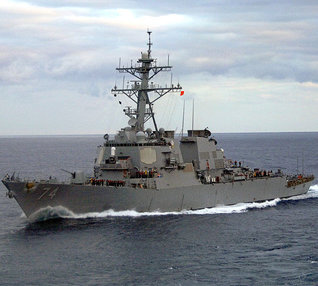I served as a Police Officer, Corporal, Inspector, Sergeant, Lieutenant and Captain from 1980 to June, 2011 in the SF Bay Area. In 1994, I was assigned to a regional SWAT Team as a Team Leader and Sniper. I became a Team Commander in 1999. When I retired, I was the senior Commander and Sniper Team Commander for the largest regional team in California. I now teach Administration of Justice at Skyline College and I'm the On-Screen Team Lead for www.GuardAmerican.com, a firearms training website.
Great question, Jer.
Snipers try to position themselves at right angles to the windows and doors they are responsible for covering, and this is one of the primary reasons. Of course, that's not always possible. The next consideration is how far inside the glass the suspect is located. If he's close to the glass, the bullet won't deflect far enough at slight angles to make a difference. If he's deeper in the room (several feet from the glass) then the deflection of the bullet can be enough to miss the kill shot.
Two additional measures used are the simultaneous shots taken by two snipers. In this case, two snipers make simultaneous shots at the same point of aim based on a countdown procudure. While the goal is to have the two shots go off at the same time, they are a fraction of a second apart due to human reflexes. The first bullet to hit the glass breaks it, and the second shot has no resistance or deflection as it passes through the shattered glass. It doesn't matter which shot is first or second; they are both aimed at the same spot, so the second one hits the mark.
Lastly, we have special ammunition designed specifically to reduce deflection on glass penetration. The very soft tip bites and drills through glass with minimal deflecting. The sniper carries this ammo in his backpack or vest and will select it if there is much of an angle through glass to deal with.
When I retired, the night vision we were using was much higher definition than the old, grainy green First Generation NV we used to have. The picture is more of a black-and-white image now, and very clear. There may be even higher definition NV in use by some departments or the military by this time...the rate that technology is advancing is truly amazing.
Hello Trophy wife!
I discussed the SWAT selection process in an answer I posted yesterday (not sure if you saw it) but to briefly summarize, we really try to make sure that no cops, whether on SWAT or not, are hotheads or deliquents. But since we are just plain old humans, sometimes one sneaks through the hiring cracks. It is extremely rare for anyone to make it onto a SWAT Team unless they are very calm under extreme pressure and have very good records as police officers. In the remote instance that an unsuitable cop made it to the team, he would be very quickly tossed from it. Peer accountablility and devotion to the wellbeing of the whole team is required of any SWAT operator, and a person without these traits wouldn't last a minute.
The goal of police officers is to save lives, not take them, so we do everything humanly possible to avoid hurting anyone. SWAT call-outs are driven by the actions of the suspect; we merely react to those actions. So, if I'm on the rifle in a hostage rescue incident, and I'm responsible for watching the suspect through a window, and he points a gun at a hostage or is holding a suspect with a knife under their throat, he is posing an immediate threat to the life of another, and I will eliminate that threat immediately. Someone should ask me how we can ensure that the suspect won't kill the hostage when we fire. Anyone?
Navy Officer (Former)
 Do you think there's a chance the US reinstates the draft?
Do you think there's a chance the US reinstates the draft?
Hollywood Executive Assistant
 Are Hollywood execs as nightmarish as depicted on TV?
Are Hollywood execs as nightmarish as depicted on TV?
Subway Store Manager
 The 6" sub is too small and the 12" is too big. Why no 9-inch sub?
The 6" sub is too small and the 12" is too big. Why no 9-inch sub?
One of the reasons that SWAT Teams train so much and in so many different possible scenarios is so that the number of "unconventional" situations are few and far between. Every call-out is unique and presents its own challenges. It could be a high-risk warrant service, an armed, barricaded suspect incident, a hostage rescue, a presidential protection detail...I will have to think about one that strikes me as the most unconventional and get back to you. Sorry!
One thing I will never do is pretend to be an "expert" in an area I'm not fully versed in. Explosives is one of those areas. I can tell you from my limited knowledge on the subject is that typical bomb squad suits are basically giant bullet resistant vests made from the same materials, but that cover the entire body, not just the torso. As such, they are good at stopping flying fragments and shrapnel common to small explosive devices. I can also tell you that what kills most people close to an explosion is the concussion of the rapidly expanding shock wave, which can liquify internal organs without leaving a mark on the skin. If the blast is big enough, and the bomb tech is close enough, the suit won't help much. So, yes, they ARE the bravest SOBs on the planet! BTW, I would be delighted to hear from a military EOD specialist or police bomb tech if my information is incorrect. Learning is never-ending.
P.S. One of my favorite T-shirts is the one that says, "I'm a Bomb Tech. If I'm running, try to keep up."
Yes, we do. SWAT sniper/observer teams deploy together in most cases, just like in the military, and for the same reasons. In police situations, a sniper team may be responsible for covering a particular door or window during a hostage rescue, and having two sets of eyes with different optics watching things is always better than one set. Relaying intelligence to the command post and to the entry team is a huge part of the sniper/observer duties, as well as providing force protection and overwatch to the entry team. At the relatively close ranges encountered by SWAT snipers, the observer is usually using binoculars with a wider field of view than the sniper can see through the rifle scope, and can direct the sniper to a particular window or doorway if the suspect is spotted.
SWAT activations can last many hours; after a while, the sniper must be relieved in order to rest his eyes and muscles. While "on the scope" a sniper's job requires intense, 100% concentration in case a life-saving hostage rescue shot must be taken. Snipers are observers and observers are snipers, equally qualified in both jobs. A team of two can be self-relieving to extend deployment time for up to 12 hours if need be.
The training and equipment used by police and military sniper/observers is very similar (sometimes identical.) Of course, police snipers can't call in an airstrike :-)
-OR-
 Login with Facebook
Login with Facebook (max 20 characters - letters, numbers, and underscores only. Note that your username is private, and you have the option to choose an alias when asking questions or hosting a Q&A.)
(A valid e-mail address is required. Your e-mail will not be shared with anyone.)
(min 5 characters)
By checking this box, you acknowledge that you have read and agree to Jobstr.com’s Terms and Privacy Policy.
-OR-
 Register with Facebook
Register with Facebook(Don't worry: you'll be able to choose an alias when asking questions or hosting a Q&A.)